 | ![Federico Herrero[San José, 1978. Vive e trabalha em San José]Wootyloop, 2012. Madeira e tinta.](../../img/ilustracao/04/03/a04/a04_modal.jpg) |  |  |
Federico Herrero
[San José, 1978. Lives and works in San José]
Trained as an architect, the Costa Rican artist Federico Herrero mainly uses the medium of painting. Many of his works, like the one featured in the show Além da Vanguarda, are realized onsite: in public spaces such as façades of houses and buildings, on city walls or private walls inside galleries or other types of buildings, where he executes his paintings in close dialogue with the spatial organization of the locale. Characterized by their vibrant color, normally divided into units of abstract and simultaneously fluid and imprecise forms, these paintings — in contrast with the rigorous geometric abstractions that characterize the Latin American art of the mid-20th century — nearly seem to sprout organically from the walls. Their mode of existence is therefore more analogous to the disordered and voracious way that the lush nature of the tropics takes over the constructions in these regions of the planet. As a further comparison with the botanical order, these paintings at certain moments resemble the drawings of landscape designs by Roberto Burle Marx, with their sinuous lines and areas of color interlaced within a set of organic forms.
To a certain extent, Herrero’s practice borrows characteristics from the tradition of mural painting, a practice associated mainly with the Mexican artists of the first half of the 20th century, but which found echoes in various Latin American countries including Brazil. But, if on the one hand it shares with this tradition an interest in bringing art closer to a nonspecialized public that inadvertently comes across his paintings in public spaces, it abstains from seeking to convey more direct political and ideological contents, as was the case of the original muralists.
In the coloring of Herrero’s paintings, we find a strong resonance with the production that has been consistently presented at the various editions of the Bienal Naïfs since its founding. The presence of his works at this show seeks to catalyze the artworks selected by the jury, allegorically suggesting that they leave the bidimensional plane, overflowing it and crawling across the floor, climbing the walls and moving across the ceiling of the building, to finally occupy all of the tridimensional space of SESC Piracicaba.
